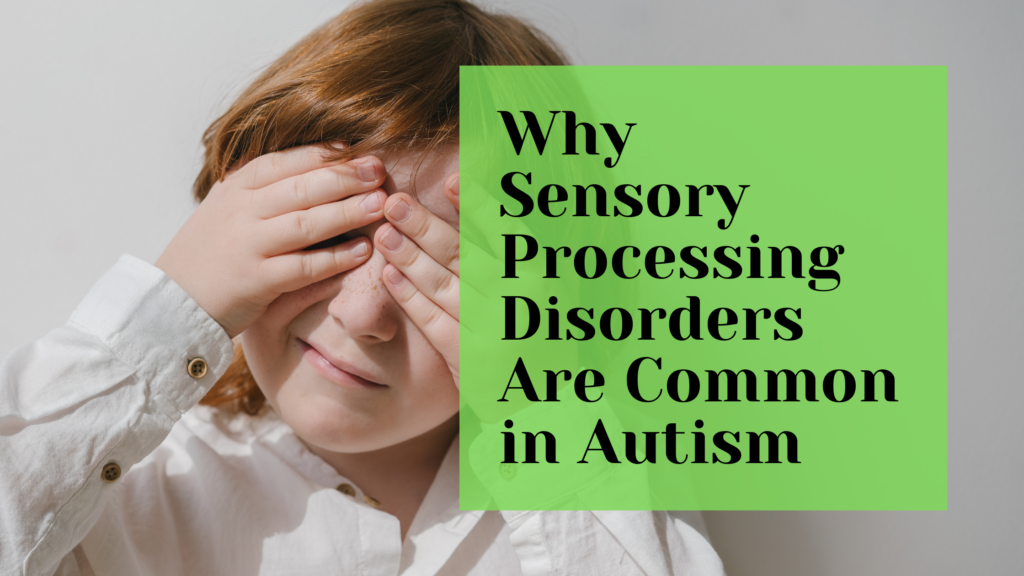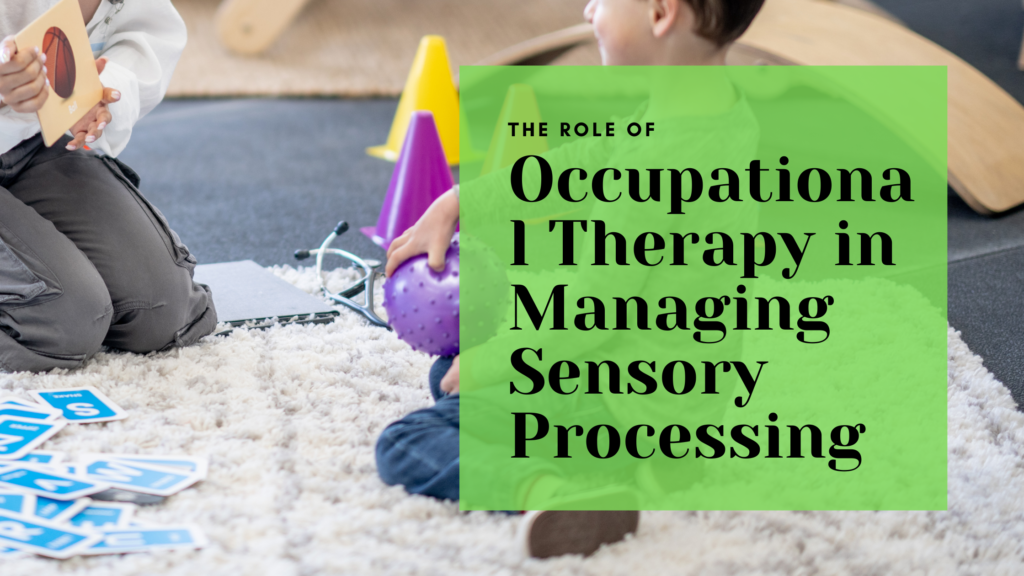I. Introduction
Understanding the Need for a Sensory-Friendly Home
For children with Autism Spectrum Disorder (ASD), the world can be an overwhelming place filled with sensory experiences that are difficult to process. A sensory-friendly home is essential to providing a safe and comfortable environment where these children can thrive. Such an environment helps reduce the risk of sensory overload, which can lead to anxiety, meltdowns, and behavioral challenges.
Impact on Daily Life
A well-designed sensory-friendly home can profoundly improve the daily lives of autistic children. By creating spaces that cater to their sensory needs, you can help them feel more secure, reduce stress, and support their development. This approach not only makes day-to-day life easier but also promotes a sense of well-being and independence.
Purpose of the Article
This article aims to provide practical tips and strategies for creating a sensory-friendly home for your autistic child. From assessing your child’s sensory needs to implementing sensory tools and maintaining a supportive environment, this guide will help you make informed decisions that enhance your child’s quality of life.
II. What is a Sensory-Friendly Home?
Definition and Importance
A sensory-friendly home is an environment designed to accommodate the unique sensory needs of autistic individuals. This means creating spaces that minimize sensory overload and provide comfort through appropriate sensory inputs. Key features include quiet areas, soft lighting, organized spaces, and tactile-friendly materials.
Key Features of a Sensory-Friendly Home
Essential elements of a sensory-friendly home include:
- Quiet spaces: Areas where your child can retreat to when overwhelmed.
- Appropriate lighting: Using natural light or soft artificial lighting to avoid harsh visual stimuli.
- Clutter-free areas: Keeping spaces organized to reduce visual and mental clutter.
- Tactile-friendly materials: Using soft fabrics and avoiding textures that may cause discomfort.
Why It’s Crucial for Autistic Children
Sensory-friendly environments are crucial for managing sensory overload, which is common in autistic children. These environments help in reducing anxiety, improving focus, and providing a safe space where children can process sensory information at their own pace. By catering to their sensory preferences, you create a foundation for better emotional and cognitive development.
III. Assessing Your Child’s Sensory Needs
Understanding Sensory Sensitivities
Autistic children often experience sensory sensitivities that can vary greatly from one child to another. Common sensitivities include:
- Noise sensitivity: Loud sounds may be overwhelming or even painful.
- Light sensitivity: Bright lights, especially fluorescent lighting, can be distressing.
- Tactile sensitivity: Some children may find certain textures uncomfortable or intolerable.
Understanding these sensitivities is the first step in creating a sensory-friendly environment that meets your child’s needs.
Creating a Sensory Profile
Creating a sensory profile involves observing your child’s reactions to different sensory stimuli and documenting their triggers and preferences. This profile can include details about which sounds, lights, textures, and smells your child finds calming or distressing. By understanding these preferences, you can tailor your home environment to better support your child.
Involving Your Child in the Process
Involving your child in identifying their sensory needs can be incredibly empowering. Encourage them to express their likes and dislikes, and observe their reactions in different environments. This collaborative approach ensures that the sensory adjustments you make are truly beneficial.
IV. Designing a Sensory-Friendly Home Environment
1. Creating a Calm and Quiet Space
Designated Calm Areas
A designated calm space is crucial for helping your child retreat when they feel overwhelmed. This area should be free from distractions, with soft lighting, comfortable seating, and items that soothe your child, such as their favorite toys or blankets.
Noise Reduction Strategies
To reduce auditory overload, consider using noise-cancelling devices or soundproofing techniques. Creating quiet zones within your home where noise is minimized can help your child feel more at ease. Soundproof curtains, rugs, and even white noise machines can be effective tools for reducing unwanted noise.
2. Optimizing Lighting and Visual Stimuli
Natural vs. Artificial Lighting
Lighting plays a significant role in creating a sensory-friendly environment. Whenever possible, use natural light, which is softer and less likely to cause discomfort. If artificial lighting is necessary, opt for warm, dimmable bulbs that mimic natural light. Avoid fluorescent lights, which can be harsh and overstimulating.
Visual Clutter
Reducing visual clutter is another key aspect of creating a calming environment. Keep decor simple and organized to prevent overstimulation. Choose calming colors like soft blues, greens, or neutral tones, which can help reduce visual stress.
Sensory-Friendly Decor
Incorporate decor that your child finds soothing. This might include soft textures, gentle colors, and familiar patterns. Avoid busy designs or bright, contrasting colors that can be visually overwhelming.
3. Tactile and Textural Considerations
Choosing Sensory-Friendly Materials
The materials used in your home’s furnishings can significantly impact your child’s comfort. Choose soft, comforting fabrics like cotton or fleece for bedding and seating. Avoid materials that your child finds irritating, such as wool or certain synthetic fabrics.
Incorporating Sensory Textures
Incorporating a variety of textures that your child enjoys can enhance their sensory experience. This might include soft blankets, textured walls, or sensory rugs. Providing a range of textures can help meet your child’s tactile needs and create a more engaging environment.
4. Managing Smells and Tastes
Neutralizing Strong Odors
Strong odors can be overwhelming for children with sensory sensitivities. To manage this, use unscented cleaning products and minimize the use of strong-smelling items in the home. Air purifiers can also help maintain a neutral scent environment.
Aromatherapy and Scented Products
For some children, mild, calming scents can be beneficial. Aromatherapy using lavender or chamomile, for example, can create a soothing atmosphere. Always use scents sparingly and ensure they are pleasant for your child.
5. Organizing the Space for Predictability and Routine
Visual Schedules and Cues
Visual schedules are a great way to help your child anticipate daily routines and reduce anxiety. These can be simple charts or apps that outline the day’s activities, helping your child feel more in control and less stressed by unexpected changes.
Organized and Clutter-Free Spaces
Maintaining an organized, clutter-free environment supports routine and reduces stress. Regularly declutter spaces and create storage solutions that make it easy to keep your home tidy. An organized home can help your child feel more secure and comfortable.
V. Incorporating Sensory Tools and Aids
1. Sensory Toys and Tools
Essential Sensory Tools
Sensory tools are essential for helping autistic children manage their sensory needs. Some useful tools include:
- Weighted blankets: Provide deep pressure that can be calming.
- Fidget toys: Help with focus and self-regulation.
- Sensory swings: Offer vestibular stimulation that many autistic children find soothing.
How to Use Sensory Tools Effectively
Integrate these tools into your child’s daily routine by making them easily accessible and encouraging their use during times of stress or as part of a calming routine.
2. Technology and Apps for Sensory Support
Sensory Apps
Several apps are designed to help manage sensory input and provide calming effects. Apps that offer guided meditation, white noise, or visual stimulation can be particularly helpful in creating a sensory-friendly digital environment.
Assistive Technology
Assistive technology, such as white noise machines or adaptive devices, can support your child’s sensory needs by providing consistent and controllable sensory input. These tools can be especially helpful in managing sensory challenges throughout the day.
3. Creating Portable Sensory Kits
Importance of Portable Sensory Kits
A portable sensory kit is invaluable for managing sensory needs on the go. Whether during outings or travel, having a kit with essential items can help your child feel secure and comfortable in unfamiliar environments.
What to Include in a Sensory Kit
A well-stocked sensory kit might include:
- Noise-cancelling headphones
- Fidget toys
- Comfort items (such as a favorite blanket or stuffed animal)
- Portable sensory tools (like a small weighted lap pad)
These items can help your child manage sensory input and remain calm in new or challenging situations.
VI. Maintaining a Sensory-Friendly Home Over Time
Regular Assessments and Adjustments
As your child grows, their sensory needs may change. Regularly assess and adjust the sensory environment to ensure it continues to meet their needs. Stay attuned to any new sensitivities or preferences that develop over time.
Involving the Whole Family
Creating and maintaining a sensory-friendly home is a family effort. Ensure that everyone in the household understands the importance of the sensory-friendly environment and is committed to maintaining it. This teamwork helps create a consistent and supportive space for your child.
Adapting to Changes
As your child’s needs evolve, be flexible and willing to make changes to the sensory environment. This might involve updating sensory tools, rearranging spaces, or altering routines to better suit your child’s current needs.
VII. Conclusion
Recap Key Strategies
Creating a sensory-friendly home for your autistic child involves understanding their sensory needs, designing a supportive environment, and incorporating sensory tools and aids. By regularly assessing and adjusting the environment, you can ensure that your home remains a sanctuary that supports your child’s development and well-being.
Encouragement for Continuous Improvement
Continuous improvement is key to maintaining a sensory-friendly home. Stay informed about your child’s evolving needs and be open to making changes that enhance their comfort and security.
Further Resources
For additional support, consider exploring resources such as online communities, support groups, and sensory-friendly products that can help you create the best possible environment for your child.
We encourage you to share your experiences and tips for creating a sensory-friendly home. By sharing, you contribute to a community of parents and caregivers dedicated to supporting autistic children.
Subscribe for More
Subscribe to our newsletter or follow us for more insights and practical tips on autism and sensory-friendly living. Together, we can create homes where our children feel safe, supported, and understood.
References:
- Ben-Sasson, A., et al. (2009). A meta-analysis of sensory modulation symptoms in individuals with autism spectrum disorders. Journal of Autism and Developmental Disorders, 39(1), 1-11.
- Tomchek, S. D., & Dunn, W. (2007). Sensory processing in children with and without autism: A comparative study using the short sensory profile. American Journal of Occupational Therapy, 61(2), 190-200.
- Miller, L. J., Anzalone, M. E., Lane, S. J., Cermak, S. A., & Osten, E. T. (2007). Concept evolution in sensory integration: A proposed nosology for diagnosis. American Journal of Occupational Therapy, 61(2), 135-140.


